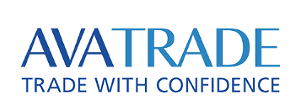Don’t invest unless you’re prepared to lose all the money you invest. This is a high-risk investment and you are unlikely to be protected if something goes wrong. Take 2 minutes to learn more
The advent of Ethereum blockchain technology is giving rise to a transformative solution for the age-old problem of stolen artifacts held within museums. Pioneering researchers are crafting an Ethereum-based blockchain tool named Salsal, aimed at revolutionizing the organization and oversight of valuable historical collections within museums and cultural institutions.
Decolonizing Museums Through Blockchain
Mark Altaweel, a distinguished professor in the archaeology department at the esteemed University College of London, has spearheaded the development of Salsal in collaboration with colleagues from Abu Dhabi University over an intensive two-year period. Altaweel envisions this blockchain innovation as the preliminary stride towards “decolonizing museums,” an initiative to reclaim the historical narrative.
The essence of blockchain lies in its decentralized framework, which allows for a collaborative and inclusive approach to heritage management. Altaweel aptly elucidated this concept in a dialogue with Blockworks, emphasizing that “it allows a decentralized way of dealing with and managing heritage. So if I have expertise about something, and you have expertise about something, we can all participate in these networks.”
The crux of Salsal’s success hinges on garnering expert participation. Under the Salsal blockchain, museums, and collectors willingly submit their troves of historical artifacts. Distinguished experts, such as archaeologists, scrutinize each piece to assess its condition, provenance, and legality of acquisition.
Rating Legitimacy: A Comprehensive Approach to Artifact Evaluation
The Salsal network, designed as a partially private iteration of Ethereum, adopts the Museum Association’s sliding scale rating system. This evaluative tool assigns ratings ranging from one to five, signifying the ethical and legal status of the collection. A rating of one symbolizes items with robust documentation acquired legally. Conversely, a rating of five flags items with irrefutable proof of illegal acquisition.
Collections that are collected ethically and have proper documentation of their origin can be converted into non-fungible tokens (NFTs) and publicly displayed on the Salsal blockchain. This novel approach bolsters the financial viability of museums and collectors and also fosters public engagement by offering NFT ownership.
Addressing concerns of potential exploitation, Altaweel and his colleagues have rigorously excluded subpar collections from the NFT scheme. Altaweel further advocates for complete transparency by showcasing all collections on the blockchain. This move underscores accountability and pressures museums to confront historical artifacts with murky origins.
Envisioning a Worldwide Heritage Repository Beyond NFTs
A glaring testament to the necessity of Salsal’s mission is the plight of stolen artifacts held by renowned institutions like the British Museum in London. The ongoing debate regarding the repatriation of pilfered items, including the Benin Bronzes, Parthenon Marbles, and Rosetta Stone, calls for innovative solutions.
Salsal’s intrinsic role extends beyond NFTs, serving as an immutable repository for global museum collections. Altaweel evokes the case of the Baghdad Museum in Iraq, looted during the 2003 US invasion. A blockchain-powered system like Salsal, as Altaweel envisions, could thwart cultural vandalism. The tragic incident of the Baghdad Museum’s looting could have been averted, as Salsal’s blockchain would have enabled real-time tracking, community involvement, and item recovery.
The expedition towards Salsal’s integration is ongoing, primarily targeting Abu Dhabi museums, including the prominent Louvre branch. As summer hurdles complicate funding efforts, Altaweel and his team are resolute in their ambition to unveil Salsal on the Ethereum platform within half a year.
Conclusion
Ethereum’s Salsal innovation signifies a remarkable stride towards safeguarding cultural heritage. By forging a decentralized and collaborative network, museums and experts unite to fortify the integrity of historical collections. The blockchain’s potential to illuminate the shadows of provenance and ownership evokes optimism for a future where cultural artifacts are cherished, ethically sourced, and universally accessible.
How To Buy Lucky Block – Guide, Tips & Insights | Learn 2 Trade
Note: Learn2.trade is not a financial advisor. Do your research before investing your funds in any financial asset or presented product or event. We are not responsible for your investing results.
- Broker
- Min Deposit
- Score
- Visit Broker
- Award-winning Cryptocurrency trading platform
- $100 minimum deposit,
- FCA & Cysec regulated
- 20% welcome bonus of upto $10,000
- Minimum deposit $100
- Verify your account before the bonus is credited
- Fund Moneta Markets account with a minimum of $250
- Opt in using the form to claim your 50% deposit bonus
Learn to Trade
Never Miss A Trade Again

Signal Notification
Real-time signal notifications whenever a signal is opened, closes or Updated

Get Alerts
Immediate alerts to your email and mobile phone.

Entry Price Levels
Entry price level for every signal Just choose one of our Top Brokers in the list above to get all this free.







